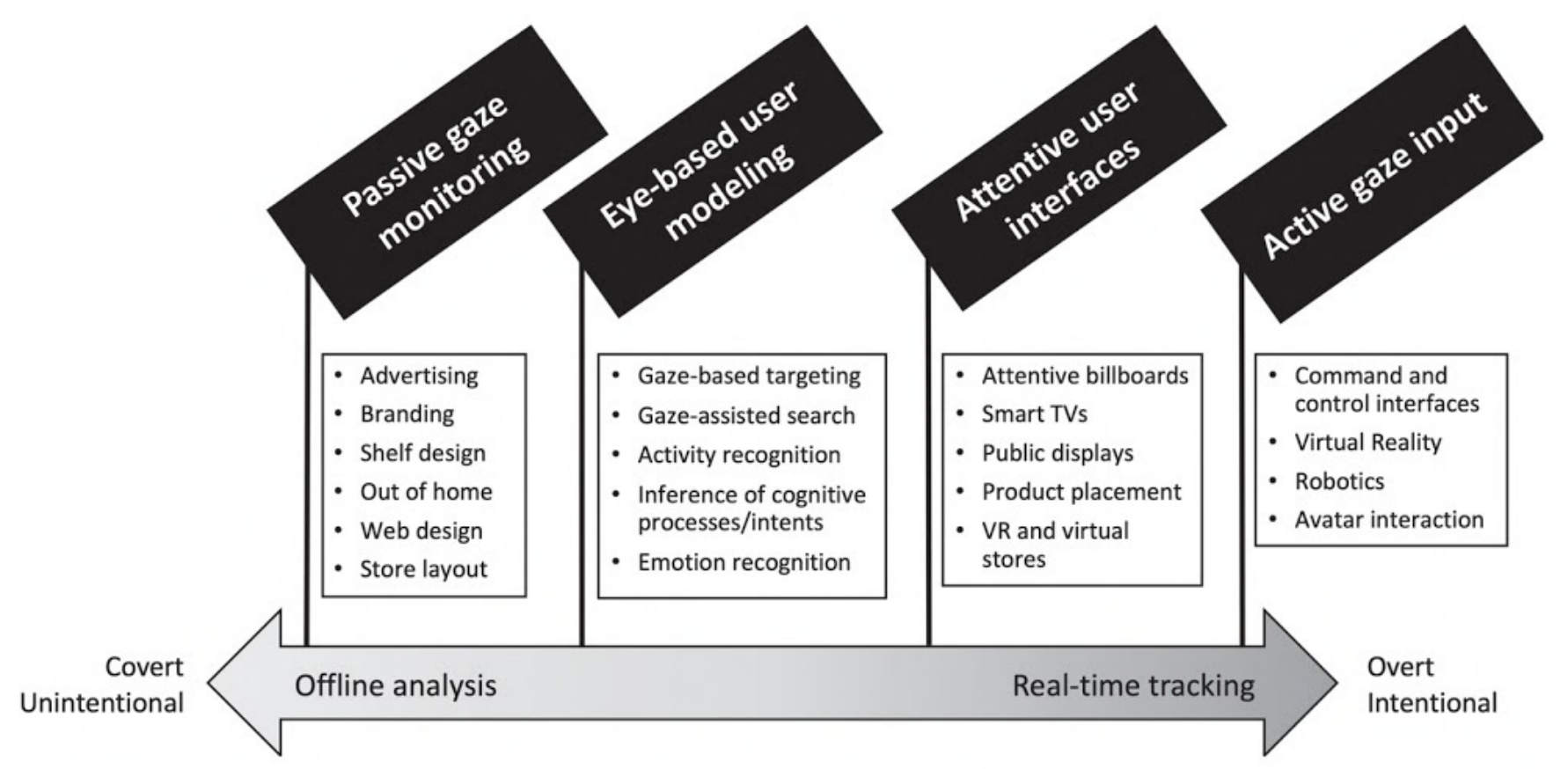Pervasive Eye Tracking for Real-World Consumer Behavior Analysis
Andreas Bulling, Michel Wedel
Michael Schulte-Mecklenbeck, Anton Kühberger (Eds.): A Handbook of Process Tracing Methods for Decision Research: A Critical Review and User’s Guide, Taylor & Francis, pp. 27-44, 2019.

Abstract
Eye tracking is the computational process of measuring the absolute point of gaze and/or the relative movement of the eyes over time using sensing systems placed in the environment (remote eye tracking) or worn on the head (mobile eye tracking). Eye tracking has a long history as a tool in psychology, human behaviour, and human-computer interaction research, and has also found its way into many commercial applications, such as marketing, web usability, virtual reality, or automotive engineering. Recent advances in mobile eye tracking as well as remote eye tracking using RGB cameras readily integrated into handheld devices and ambient displays pave the way for a whole new class of everyday eye tracking systems that allow researchers and practitioners to better understand and analyse gaze information in real-world settings. In this chapter, we first provide a history of eye tracking as both a measurement tool and research topic. Afterwards, we discuss the considerable potential but also remaining technical challenges for leveraging everyday eye tracking for real-world consumer behaviour analysis and decision making in retail.Links
Paper: bulling19_tf.pdf
BibTeX
@inbook{bulling19_tf,
author = {Bulling, Andreas and Wedel, Michel},
title = {Pervasive Eye Tracking for Real-World Consumer Behavior Analysis},
booktitle = {A Handbook of Process Tracing Methods for Decision Research: A Critical Review and User's Guide},
year = {2019},
editor = {Schulte-Mecklenbeck, Michael and K{\"{u}}hberger, Anton},
publisher = {Taylor \& Francis},
pages = {27-44}
}

